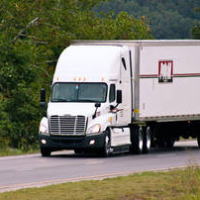
 Contrary to the economic scenario of last few years, the current improvement in the situation has made things exciting for the current season of trade shows and expos. The real estate market has shown dramatic improvement in most parts of the U.S. and the global business scenario is also showing the same signs. An increasing number of local businesses, new ventures and global corporations are increasing their production and hiring new manpower. This clearly means that most of these reassigned employees are going to relocate to different parts of the world in near future.
Contrary to the economic scenario of last few years, the current improvement in the situation has made things exciting for the current season of trade shows and expos. The real estate market has shown dramatic improvement in most parts of the U.S. and the global business scenario is also showing the same signs. An increasing number of local businesses, new ventures and global corporations are increasing their production and hiring new manpower. This clearly means that most of these reassigned employees are going to relocate to different parts of the world in near future.
Specialized movers are going to face tough challenge in this economy that is getting back to its tracks. This is because the transportation industry has an edge with regard to recruiting from the existing local and in-operation driver capacity.
The reason is that according to the American Trucking Association, the rate of driver turnover with larger truckload carriers grew beyond 100% in the Q2-2012. This means that after the start of the recession, it was for the first time that the trucking industry lost more number of drivers than the numbers that joined it. In other terms, this means that the carriers have to replace their entire driver capacity every year so as to provide the same level of service.
The American Moving and Storage Association or AMSA, announced in January 2013 that it has developed and executed a recruitment and training program, Registered American Moving Professionals or RAMP. This program is being run in partnership with many workforce improvement organizations from southern Indiana and Kentucky.
Drivers who want to pursue a career in this industry are beginning to get annual packages starting $40,000 and going up to $300,000. In one example, the Workforce Investment Board in Greater Louisville area is working for the recruitment and training of drivers and moving professionals. According to AMSA, this region would require mover 750 new drivers annually for managing the current requirement.


















Leave Your Response